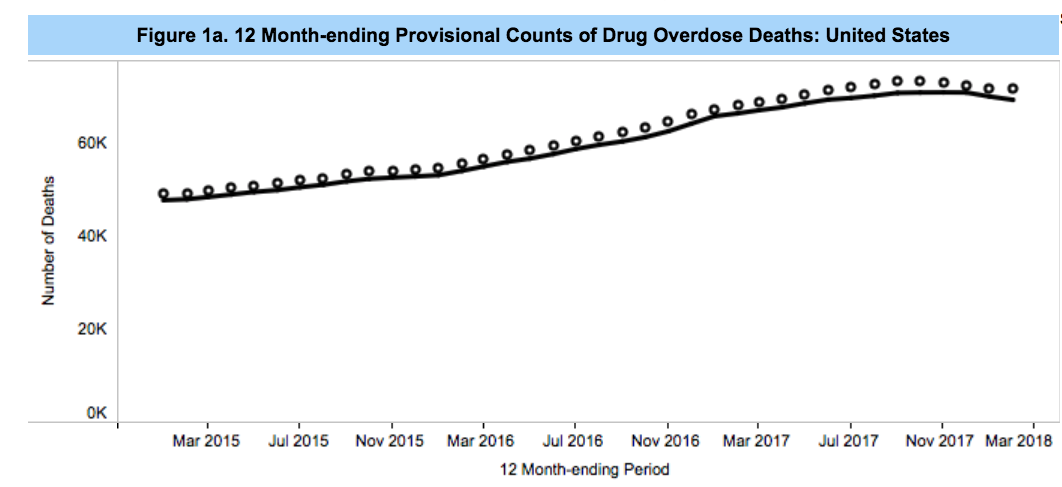The Federal Agency That Fuels the Opioid Crisis
The Drug Enforcement Administration has proved itself incompetent for decades.
www.nytimes.com/2018/09/17/opinion/drugs-dea-defund-heroin.html
Every day, nearly 200 people across the country die from drug overdoses. Opioids have been the primary driver of this calamity: first as prescription painkillers, then heroin and, more recently, illicitly manufactured fentanyl. The death toll has risen steadily over the past two decades.
The Drug Enforcement Administration, the agency that most directly oversees access to opioids, deserves much of the blame for these deaths. Because of its incompetence, the opioid crisis has gone from bad to worse. The solution: overhauling the agency, or even getting rid of it entirely.
The problem begins with poor design. A brainchild of Richard Nixon’s “war on drugs,” the agency sought to cut off supplies of drugs on the black market, here and abroad. But in passing the Controlled Substances Act of 1970, Congress also gave the agency broad authority over how prescription opioids and other controlled substances were classified, produced and distributed. The agency was supposed to curb problematic drug use, but failed to do so because its tactics were never informed by public health or addiction science.
Despite the investment of hundreds of billions of taxpayer dollars and the earnest efforts of thousands of employees, the D.E.A.’s track record is abysmal. The agency has been unable to balance legitimate access to and control of prescription drugs. The widespread over-reliance on opioids, along with benzodiazepines, amphetamines and other scheduled medications, has created a booming black market.
The agency’s enforcement strategies, and the support it has lent to local and state police departments, have also fueled abusive police tactics including dangerous no-knock-raids and ethnic profiling of drivers. It has eroded civil liberties through the expansion of warrantless surveillance, and overseen arbitrary seizures of billions of dollars of private property without any clear connection to drug-related crimes. These actions have disproportionately targeted people of color, contributing to disparities in mass incarceration, confiscated property, and collective trauma.
The United States was ill equipped to navigate the worst drug crisis in its history with the D.E.A. at the vanguard. Starting in the late 1990s the manufacturing, distribution and prescribing of opioids began to increase rapidly. Overdose deaths soared since so many people were prescribed opioids and many mixed them with alcohol and other sedative drugs. The D.E.A. could have marshaled a calibrated response, expanding evidence-based treatment and reducing the prescription of especially risky drug combinations.
Instead, the agency pushed for surveillance of prescription records and electronic communication, doubled down on prosecuting prescribers and helped to tighten the screws on patients seeking pain relief. Meanwhile, lifesaving opioid treatments that the D.E.A. closely regulates, like methadone, have remained extremely difficult to obtain. Indeed, these problems were much broader than the alleged industry machinations to muzzle the agency.
A decade into the crisis, more and more prescription drug users turned to the black market. Even though the D.E.A. had tried to “eradicate” illicit drugs for nearly 50 years, users could easily buy stolen and counterfeit pills, along with a cheaper option, heroin. Soon, some began injecting. Outbreaks of H.I.V. and hepatitis C followed. Meanwhile, people who sought evidence-based treatment were rarely able to access it because of the agency’s evolving regulatory and enforcement strategies, like blocking the expansion of mobile methadone clinics and shutting down addiction treatment providers without arranging alternatives for affected patients.
As the engine of overdose deaths shifted from prescription drugs to heroin, the D.E.A. turned to its supply-reduction playbook. This resulted in a major uptick in heroin seizures and high-profile prosecutions, which encouraged traffickers to create more compact, potent drugs. In a single year, from 2014 to 2015, deaths involving the synthetic opioid fentanyl and its analogues almost doubled, setting the stage for its current role as the principal driver of overdose fatalities. And since 2015, the agency has not had an appointed administrator.
We urgently need to rethink how our nation regulates drugs. What should our goals be? How can we design institutions and performance metrics to achieve them?
The answers lie at the local and state levels. In Rhode Island, opioid overdoses are declining because people behind bars have access to effective treatment. Massachusetts has deployed drop-in centers offering treatment, naloxone and other services. San Francisco and Seattle are planning to open safe consumption spaces which show tremendous promise as a tool to reduce overdose deaths and other drug-related harm. But the D.E.A. and its institutional parent, the Justice Department, stand in the way of some of these experiments.
We ought to reinvent the Drug Enforcement Administration. Considering its lack of public health and health care orientation, the agency’s regulatory authority over the pharmaceutical supply could be transferred to a strengthened and independent Food and Drug Administration, while the regulation of medical and pharmacy practice can be ceded to the states. Parts of the D.E.A.’s law enforcement mandate should be transferred to the F.B.I., delegated back to the local or state, or eliminated. A significant portion of the D.E.A.’s budget should be reinvested in lifesaving measures like access to high-quality treatment.
The Drug Enforcement Administration has had over 40 years to win the war on drugs. Instead its tactics have fueled the opioid crisis. To finally make a dent in this national emergency, we need to rethink the agency from the bottom up.
Leo Beletsky, an associate professor of law and health sciences at Northeastern University, is the faculty director of the Health in Justice Action Lab, where Jeremiah Goulka is a senior fellow.
Filed under: General Problems | 1 Comment »




















 Coca-Cola ‘Closely Watching’ Use of Cannabis in Wellness Drinks
Coca-Cola ‘Closely Watching’ Use of Cannabis in Wellness Drinks



